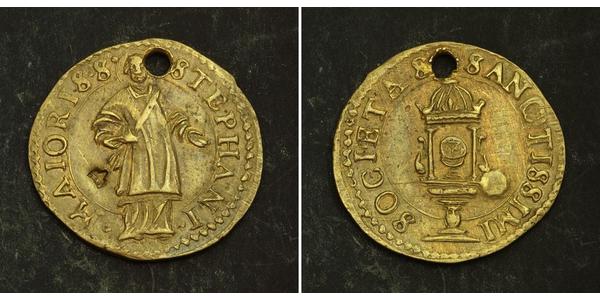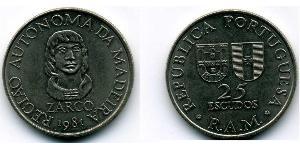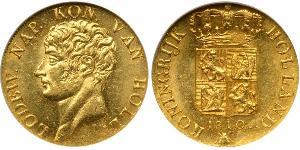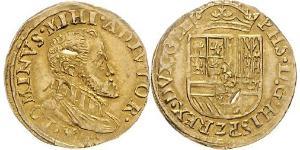(sold for $37.0)
1650s-1750s, France, Metz (City). Unusual Brass Token or Medal. RR!
Reference: KM-. RR!
Mint year: 1650s-1750s
Mint Place: Metz City (France)
Denomination: Token / Small Medal / Coin Weight?
Condition: Pierced at 12 o'clock and countermarked in obverse, scratches, otherwise XF!
Diameter: 26mm
Material: Brass
Weight: 5.67gm
Obverse: Standing figure of Saint Stephen, holding palm-branch in right hand.
Legend: STEPHANI . - . MAIORIS . S .
Reverse: Large display with an object inside (relic?) braking out of inner circle and splitting legend.
Legend: SOCIEATA S SANCTISSIMI
Metz city wass accorded the right to mint its own coins in 1383, which production came to an end after the conclusion of the Peace of Westphalia, the treaty ending the Thirty Years´War in 1648. The city and surrounding territory then formally passed to France. The last city coinage was struck in 1650!
Authenticity unconditioanally guaranteed.
Metz is a city in the northeast of France, capital of the Lorraine région and préfecture of the département of Moselle. It is located at the confluence of the Moselle and the Seille rivers.
Although historically Nancy was the capital of the duchy of Lotharingia, it was Metz which was chosen as the capital of the newly created région of Lorraine in the middle of the 20th century, because of its past history as the capital of the region of Lotharingia - an origin found much more republican-friendly than the duchy-related theory, pointing to Nancy as the region capital.
In the twelfth century, the burgesses began efforts to free themselves from the domination of the bishops. In 1180, the burgesses formed a close corporation, the Tredecem jurati, which were appointed as municipal representatives in 1207. The burgesses were still nominated directly by the bishop, who had also a controlling influence in the selection of the presiding officer of the board of aldermen (which originated in the eleventh century). The twenty-five representatives sent by the various parishes held an independent position; in judicial matters they helped the Tredecem jurati and formed the democratic element of the system of government. The other municipal authorities were chosen by the town aristocracy, the so-called Paraiges, i. e. the five associations whose members were selected from distinguished families to protect the interests of their relatives. The other body of burgesses, called a Commune, also appears as a Paraige from the year 1297; in the individual offices it was represented by double the number of members that each of the older five Paraiges had. Making common cause, the older family unions and the Commune found it advantageous to gradually increase the powers of the city as opposed to the bishops, and also to keep the control of the municipal government fully in their hands and out of that of the powerful growing guilds, so that until the sixteenth century Metz remained a purely aristocratic organization. In 1300 the Paraiges gained the right to fill the office of head-alderman, during the fourteenth century the right to elect the Tredecem jurati, and in 1383 the right of coining. The guilds, which during the fourteenth century had attained great independence, were completely suppressed (1383), and the last revolutionary attempt of the artisans to seize control of the city government (1405) was put down with much bloodshed.
The city had often to fight for its freedom; from 1324-27 against the Dukes of Luxembourg and Lorraine, as well as against the Archbishop of Trier; in 1363 and 1365 against the band of English mercenaries under Arnold of Cervola, in the fifteenth century against France and the Dukes of Burgundy, who sought to annex Metz to their lands or at least wanted to exercise a protectorate. Nevertheless it maintained its independence, even though at great cost, and remained, outwardly at least, part of the German Empire, whose ruler, however, concerned himself very little with this important frontier stronghold.
The recognition by the empire of the surrender of Metz to France came at the conclusion of the Peace of Westphalia. By the construction of the citadel (1555-62) the new government secured itself against the citizens, who were discontented with the turn of events. Important internal changes soon took place. In place of the Paraiges stood the authority of the French king, whose representative was the governor. The head-alderman, now appointed by the governor, was replaced (1640) by a Royalist Mayor. The aldermen were also appointed by the governor and henceforth drawn from the whole body of burgesses; in 1633 the judgeship passed to the Parliament. The powers of the Tredecem jurati were also restricted, in 1634 totally abolished, and replaced by the Bailliage royal.
Among the cities of Lorraine, Metz held a prominent position during the French possession for two reasons: In the first place it became one of the most important fortresses through the work of Vauban (1674) and Cormontaigne (1730); secondly, it became the capital of the temporal province of the three bishoprics of Metz, Toul, and Verdun, which France had seized (1552) and, by the Peace of Westphalia, retained. In 1633 there was created for this "Province des trois évêchés" (also called "Généralité des trois évêchés" or "Intendance de Metz") a supreme court of justice and court of administration, the Metz Parliament. In 1681 the Chambre Royale, the notorious Assembly chamber, whose business it was to decide what fiefs belonged to the three bishoprics which Louis XIV claimed for France, was made a part of this Parliament, which lasted, after a temporary dissolution (1771-75), until the final settlement by the National Assembly in 1789, whereupon the division of the land into departments and districts followed. Metz became the capital of the Department of Moselle, created in 1790. The revolution brought great calamities upon the city. In the campaigns of 1814 and 1815 the allied armies twice besieged the city, but were unable to take it.
Only 1$ shipping for each additional coin purchased!

|
Posted by:
anonymous 2016-06-07 |






















